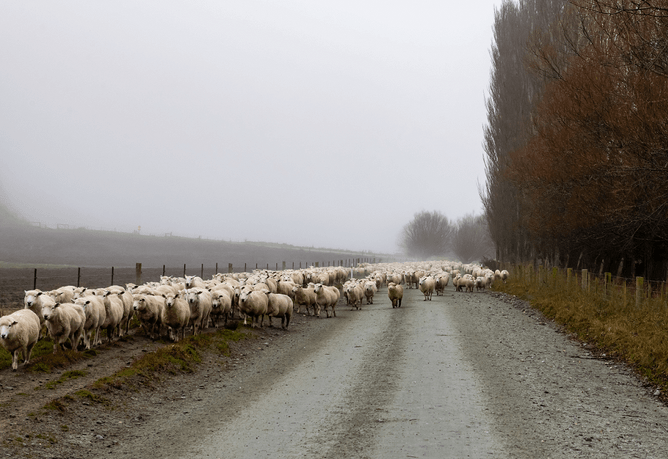Preparing your ewes now for a successful lambing is essential to ensure you have the most robust lamb and ewe unit when we arrive at lambing time.
Your ewes are mated and now they carry the precious income for next year. At this time our focus is all about:
- Lamb survival
- Ewe lactation
To ensure our ewes and lambs have the best shot, we need to feed correctly for good placenta development. The placenta develops over the first 60-80 days of gestation. Ewes should be fed at maintenance levels through this time to ensure a good nutrient supply to the lamb(s). Underfeeding will result in lighter lambs at birth, a significant factor in lamb survival.
Preparing for optimum feed quality and quantity during lambing and lactation means that you are likely to have some paddocks that need a good ‘clean up’. Your window for doing this with in-lamb ewes is the month after placenta development. During this time you can push the ewes a bit harder, but not too hard! If a paddock is rough with lots of dead matter (wasted dry feed, damaged pastures due to grass grub/porina) then you may need to allow the ewes two grazings to get it back in line without pushing them too hard. This is also the time you can use hill blocks, or poorer quality supplements without too much negative impact (there will also be less impact on singles compared to multiple and triplet ewes).
Always take out any ewes that are in low body condition if you are going to ‘make the ewes work’. Scanning is a great time to do this.
Feed
Once you get to 40 days before lambing you need to really look after your ewes and be feeding the best quality feed at adequate levels for their pregnancy status (triplet, twin, single).
- Utilise supplemental feeding early in the season. We do this to prepare the feed for the months ahead.
- Feed changes are easier on ewes that are in early pregnancy compared to late pregnancy.
- If you are feeding grain you need to introduce it slowly (10-14 days to build up to 500g) and be very consistent (daily feeding, same time of day etc). Try to feed grain to ewes that have already had their tummy filled (ie after bailage/silage/new break). This helps to reduce them from scoffing and getting grain-overload (acidosis) which can be fatal or have long-lasting impacts.
- Feeding 4 day blocks is a preferred feeding method by some. Less mud will be made, the paddocks will recover better and you will get a good gauge of how your feed allocation is going. When you have it right, there will be not much left on day 4. However, if you need to reduce weight on a group of ewes then doing this with one day breaks is kinder to them.
Body Condition Score (BCS)
Scanning is a great time to condition score your ewes. We encourage farmers to put their hand on the ewes because it gives the best information, but know in many cases this is not suitable. Taking out the lights, anyway that is possible, is much better than not doing it. Also it's a chance to find the heavy ewes that could do to shed some weight. Shuffling your ewes every time they are past the yards will be very beneficial in a season like this. We really want to avoid a big ‘tail end’ developing in the flock.
Parasites
Watch out for parasite burdens when feed is tight. We have had a perfect autumn for parasites. When we have been forced to feed low to the ground there is much higher worm intakes. Although we are always keen to minimise the use of drench in adult stock - sometimes it is ESSENTIAL for good animal management. We are always happy to discuss this with you.
2022 has not presented us with an easy farming environment. I am encouraged and heartened to see how our farmers have shuffled, modified and manipulated their system to get through. Making these changes will help to keep the negative impacts in the 2021-22 season the best we can. Hang in there, enjoy the sunny days, find some days to get off the farm, and if you want to discuss any of the above options with us you know where we are.
- Donna Hamilton


